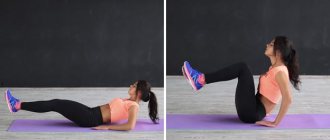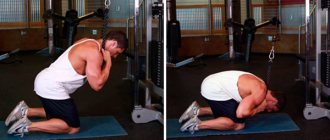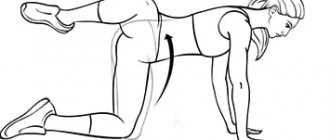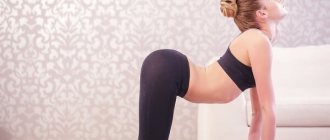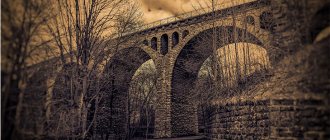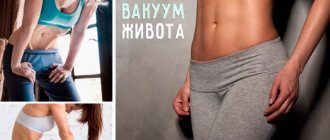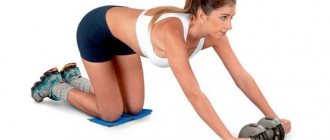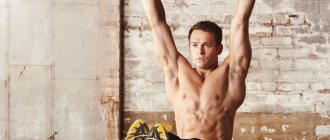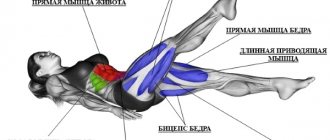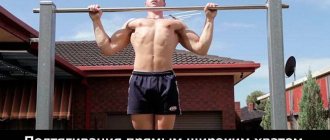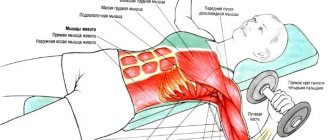Benefits and disadvantages of exercise
The main advantages of hundreds for the press:
- Suitable even for people with weak abs and lack of sports experience.
- Strengthens all abdominal muscles and also involves a large number of other muscle groups.
- Involves not only external, but also deep layers of muscles.
- Complete safety, no possibility of injury.
In general, despite the popularity of crunches, a hundred can provide even more tangible progress. This is due to the long approach, as well as maintaining tension throughout the entire set.
The disadvantage of the hundred exercise is that when performing it, athletes will quickly hit the ceiling when the effectiveness of the movement begins to decrease. Therefore, the hundred is usually used as a warm-up movement, which as a full-fledged element is shown only to beginners.
What muscles work
When performing the hundred exercise, almost all the muscles of the body are involved. The main burden falls on:
- Rectus and oblique abdominal muscles (external and internal).
- Rectus femoris muscle.
- Tailoring.
- Comb.
- Quadriceps femoris muscle.
The work also partially includes the deltoids (anterior), pectoralis major, triceps, latissimus, calf and soleus muscles.
Execution technique
There are several variations of the hundred in Pilates, which differ in the complexity of the load. The basic technique is a simple option that is recommended for all beginners.
Technique:
- Lie on the floor, bring your legs together and lift them up so that there are right angles between the body and the thigh, as well as between the thigh and the lower leg. Stretch your arms forward and hold them parallel to the floor.
- Perform a slight twist of the body, lifting the top of the shoulder blades off the floor. This is the starting position.
- Tighten your abdominal muscles and begin swinging your arms up and down for a count.
- Do 5 swings for each exhalation and 5 swings for each inhalation, this is one short series. Repeat the cycle 10 times, performing one hundred swings.
Pilates Hundred exercise for all abdominal muscles
Pilates Hundred exercise for all abdominal muscles. The exercise is aimed at developing the center and stabilizing the lumbar spine. It combines breathing exercises, strengthening the center, stretching the legs and neck, as well as increased work of the abdominal muscles and arms.
The Pilates Hundred exercise is one of the most popular exercises in the Pilates system. When performing this exercise, all abdominal muscles work. The Hundred got its name due to a special breathing technique.
One hundred consists of 10 breathing cycles. Each cycle includes 5 inhalations and 5 exhalations. There are several variations of the Hundred exercise that suit different fitness levels. This exercise is ideal for warming up. Hundred Pilates warms up both the abdominal and arm muscles in the shoulder joint, as well as the chest muscles that we use for breathing.
Effect
The exercise is aimed at developing the center and stabilizing the lumbar spine. It combines breathing exercises, strengthening the center, stretching the legs and neck, as well as increased work of the abdominal muscles and arms.
Position
Lying on your back, legs bent, you can support your knees with your palms.
Common mistakes
The main mistakes that athletes make in the 100 abs:
- Rounding the neck creates excessive stress on the cervical vertebrae, which can subsequently lead to injury. You cannot press your chin to your chest; there should be a distance of a fist between them.
- Lack of tension in the abdominal muscles - the essence of the exercise is to concentrate a constant load on the target area, complementing it with dynamic movements of the arms. This allows you to combine static and dynamic voltage.
- Insufficient lifting of the shoulder blades off the floor is another common mistake. Try to raise your upper back so that the outermost point that touches the floor is the bottom of your shoulder blades.
- Don't press your shoulders towards your head. Try to straighten your chest and keep your shoulder blades in a natural position, this will help straighten your shoulders and ensure proper arm movement. Additionally, try to pull your hands towards your buttocks to stretch your trapezius and keep your shoulder in the desired position.
- The lower back should be in contact with the floor. If there is a gap between your lower back and the floor, pull your knees slightly towards you.
Set of exercises
Although it is often stated that there is only general weight loss, and fat is lost from the entire body, and not from the abdomen or thighs, however, the load on the selected muscle gives a visible effect in this area. When muscles go from flabby and weak to flexible and strong, the desired part of the body looks better, even if there is still a layer of fat above it. In Pilates this is most pronounced for the abdomen.
Pilates exercises are not for strength, but for tension. They help both those who want to lose weight and those who want to pump up and visually change the selected muscle group.
"A hundred"
Regular version of "Hundreds"
The starting position of the “Hundred” exercise is lying on your back with your knees bent. Then the person raises his head and neck so that the back of his head stretches upward. He then raises his arms and keeps them extended along his body. The main exercise consists of small swings of the arms, which are performed 100 times. The exercise pumps the muscles of the upper abs (as in crunches), the upper back and arms.
In a more complicated version, the lower abdominal muscles are pumped. In this version of the “Hundred”, a person raises his bent (in an even more complicated version, extended vertically) legs up and holds them in this position throughout the entire exercise.
Technique:
- There should be the distance of a tennis ball between the chin and chest, the top of the head stretches upward;
- the top of the shoulder blade rushes upward, and the lower part of the shoulder blade is pressed to the floor;
- vibrations with the hands should not involve the head and body - they should be motionless;
- shoulders and chest are straightened.
Complicated version "Hundred"
When performed correctly, compression is removed from the cervical vertebrae, the spine is stretched to its maximum, and the abs receive intense stress.
The 100 is one of the most popular weight loss exercises that has gone beyond Pilates like the Plank.
Leg circles
From a supine position with your knees bent (kneecaps facing up), you need to lift your leg and stabilize it in an upright position so that the toe is pulled up.
As you inhale and exhale, you need to make a circular movement with your leg, as if drawing a circle on the ceiling. When inhaling, you need to tilt your leg towards you without bending the knee. Then, as you exhale, move your leg in a circle to the side and forward from you until the leg returns to the starting point.
Technique for performing the exercise “Circles with legs”
The abs and pelvis are fixed and motionless during the exercise - movement occurs only in the hip area. The abs are pulled upward (the lower back is not pressed to the floor!).
The exercise engages the back and front of the thigh for the legs (both static and mobile) and the abdominal muscles. If you point your heel inward and turn your toe outward, this version of the exercise will put more stress on the inside.
For 1 approach, it is advisable to do from 4 (for a beginner) to 12 “circles” (maximum) for each leg.
“Back rolls”
For rolling, it is better to use a mat.
The workout begins with a sitting position, legs bent at the knees and pulled towards the chest. A distance of 30-40 cm is maintained between the knees and chest. The back is rounded, the arms cover the legs. All support falls on the buttocks.
From this position you need to roll back, but do not touch your head to the floor. The end point of the backward movement will be the cervical vertebrae, and then you need to return to the starting position. Rolling back and forth on an arched back is one movement (no need to stop at the “neck” point) and is done quite quickly.
In this exercise, it is important to monitor the distance between the chest and legs, since at the moment of the roll there will be a reflexive desire to press the legs to the chest. If the back does not “roll” from the neck to the position on the buttocks, then the cause is errors with the legs pressed, on the contrary, with the straightening of the legs, insufficient rolling on the lower back (with an unsmooth roll) or in a roll that is too slow.
A difficulty for a beginner may be stopping the roll when returning to the initial position - for the first tests, landing on the feet instead of stopping on the buttocks is normal.
Maintaining static and arched back is the key to correct rolling technique.
Back Forward Stretch
Stages of stretching your back forward
At the beginning of the exercise, you need to sit down with your legs stretched forward slightly wider than your shoulders and the top of your head up. The toes are pulled up and towards you, the arms rest on the mat parallel to the body.
The main part of the exercise begins with exhalation. As you exhale, you need to tighten your stomach and stretch forward and down - place your upper body along your legs on top, stretching your back forward. As you gain flexibility during this part, your palms will be further than your toes.
As you inhale, you need to return to the starting position.
The shoulders should be straight and the back should not slouch, otherwise back extension will be lost.
Stretching both legs at once
The exercise allows you to pump the quadriceps femoris muscle and the rectus abdominis muscle.
The starting position of the exercise is lying on your back, legs bent at the knees - knees on yourself, and hands clasping your ankles.
As you inhale with your hands, you need to release your legs, stretch your arms along your body, and your legs forward and up - so that an obtuse angle is formed between your legs and arms (back). As you exhale, you need to return to the starting position.
During the exercise, the back should not bend and the head should not touch the floor.
You can start with 3 sets of 10 times and aim for 5 sets of 20 times, increasing the load over several months.
Stretching straight legs one at a time
The starting position for stretching straight legs one at a time is lying on your back, head raised above the floor, arms and legs straight, directed upward perpendicular to the floor and parallel to each other.
Next, you need to tilt one leg slightly towards yourself and grab it by the ankle, at this moment stretch the second leg forward from you. An obtuse angle is formed between the pulled and extended leg. With a quick movement, the pulled leg is briefly pulled over itself twice, and then the legs change. This is a variation of the scissors familiar from physical education lessons, but the movement occurs not to the sides, but back and forth. Pulling up and changing legs is done quickly, in 2-3 seconds: while inhaling, one leg is pulled in and stretched twice, change, do the same with the second leg, then repeat as you exhale.
For a beginner, it will be normal to bend the leg being pulled at the knee or grasp the leg lower - near the hip or just above the knee.
Crossbreeding
The exercise uses the oblique abdominal muscles
The starting position for crossing is lying on your back, head raised above the floor, hands on the back of your head (elbows to the sides), legs bent at the knees. While inhaling, the abs are twisted, while the elbow is pulled towards the knee of the opposite leg, which is raised from the floor, so that the knee is simultaneously pulled towards the elbow. As you exhale, return to the beginning, and then repeat with the other knee and elbow.
In a more complicated version, in the initial position, the legs are torn off the floor and bent at a right angle, and when the knee approaches the elbow, the free leg is extended forward.
It is important to keep your lower back still by focusing on your abs.
"Rocking chair"
In the starting position, you need to lie on your back, pulling your straightened legs on top of you. The back will take a rounded shape, the head will be raised, and the arms will clasp the shins of the legs.
The further scheme of the exercise consists of rolls, as in the exercise “Rolls on the back”. The difference from it lies in the position of the legs (they are extended, not bent).
Hip rotation
You need to start the exercise lying on your back, legs perpendicularly half-extended vertically, shoulder blades pressed to the floor, navel to the lower back.
As you inhale, you need to rotate your hips and feet - your heels are pressed against each other, and your toes are making a circle - each in its own direction and up.
Exhale after completing the rotation.
"Saw"
To start the exercise, you need to sit on the floor, legs extended forward and spread slightly wider than shoulders, toes pulled towards you, spine perpendicularly stretched upward. Your arms should be spread to the sides and back, palms down.
As you inhale, you need to twist your body, reaching with one hand towards the opposite foot, and pulling the other back and maintaining tension between them. In this case, you need to stretch your body with your hands - one stretches back and up, the other forward and down to the foot. The palm of the hand placed behind the back should be in an edge-on position, with the thumb pointing down.
As you exhale, you need to intensify the stretch, swinging three times towards the foot, stretching yourself more.
One leg wrap
The “single leg sweep” engages the gluteal muscles, the back of the thighs, and the back muscles.
First you need to lie on your stomach, legs extended, and raise the front of your body, resting on your forearms.
As you inhale, you need to bend your leg at the knee and pull it towards your buttocks. As you exhale, you should return your leg to the starting position and bend the other in the same way. Start with 3 sets of 5 reps.
It is important to stretch your shoulder blades towards the floor while maintaining tension in your back. Leg movements should be energetic.
